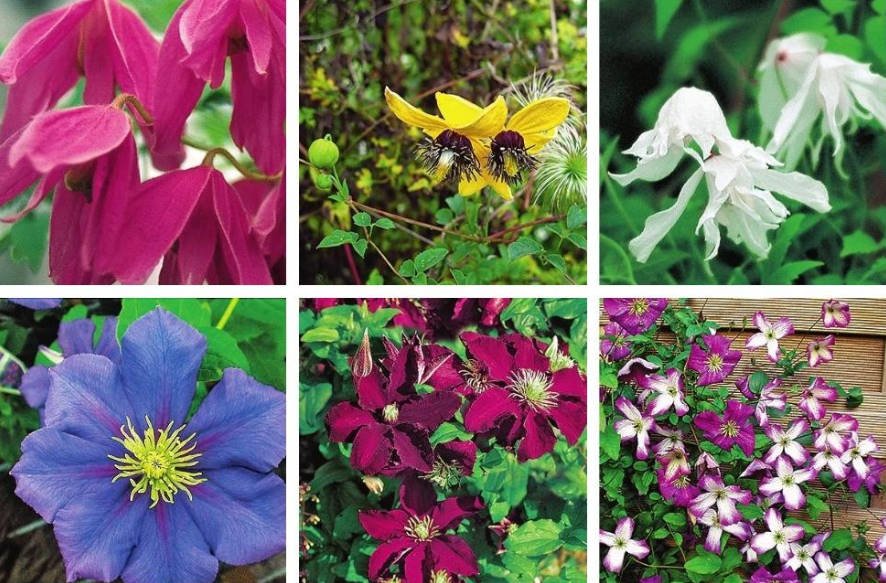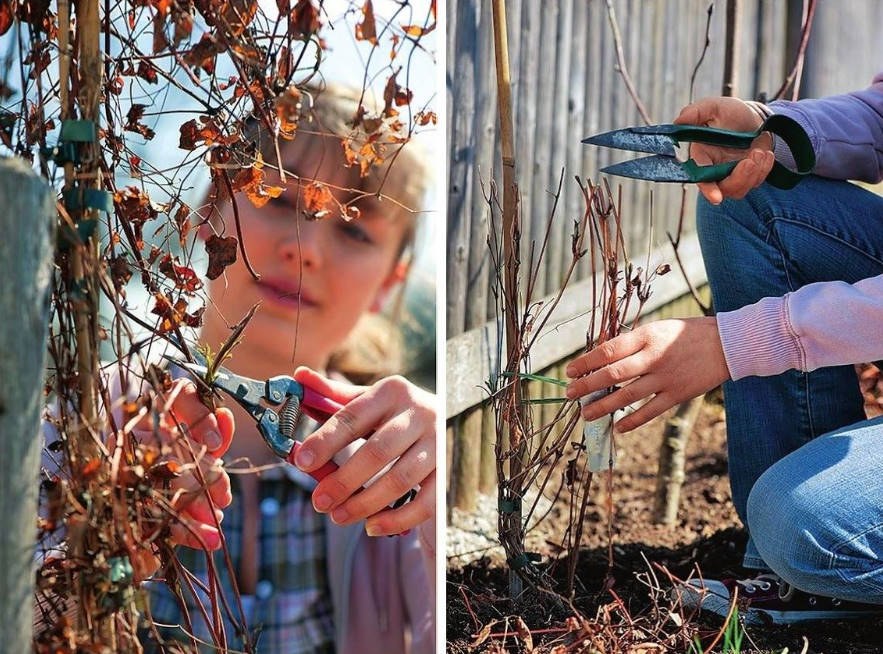
Flowers are stars of all shapes and almost all colors: the range of clematis is so large that other climbing plants do not go with them in any comparison.
Cloud of colors
Clematis is an extremely diverse genus of plants, among the species and varieties of which you can find exactly suitable for any garden and even with different flowering periods. For example, in May, Alpine clematis blooms (it has simple flowers), then the buds of mountain clematis bloom. Then comes the turn of hybrids of all colors (most often they are terry). Many clematis bloom again in August and September. In the middle of summer, clematis purple blooms in the garden. In all species, single flowers appear before the first frost, and even in winter, plants of many varieties are decorated with excellent fertility.
For good growth, any clematis needs a loose, constantly slightly moist soil. In the sun, this vine is not very profitable, it grows best in partial shade. Low-growing varieties grow well in tubs.
Beautiful clematis for every taste
We present a selection of the most beautiful.
Top row (left to right):
1. ‘Constance’ blooms in May-June. It tolerates the sun and drought well.
2. ‘Golden Tiara’ in autumn, it is covered with beautiful fruits. Blooms from July to September.
3. ‘White Swan’ it is covered in May-June with white flowers. It tolerates drought well.

Clematis. Top: Constance, Gold Tiara, White Swan. Below: General Sikorsky, Niobe, Minuet.
In the bottom row:
4. ‘General Sikorsky’ blooms in May-June and August-September. Hardy, grows well in the bath.
5. ‘Niobe’ blooms all summer, flowers up to 14 cm (5.5 inches) in diameter.
6. ‘Minuet’ it is covered with unusual flowers from June to September, but it needs a bright place.
Cropping: it all depends on the group
Strong pruning of some clematis stimulates lush flowering on young shoots, while others deprive the flower decoration, because they have buds laid a year before the next flowering. That is, it is very important to know how and when to cut this plant. In order not to get lost in a large set of clematis, they were combined into three main groups according to the method of cutting.
The first group blooms in May-June, after which they lay flower buds for the next year. If they are cut in the fall or early spring, then although new shoots will appear, the plant will not bloom. Therefore, strict pruning is necessary only when it is necessary to rejuvenate the clematis or a new form. Otherwise, it is necessary to limit the light correction immediately after flowering in June.
Second group: it includes most hybrid clematis that bloom twice a year, in spring – on last year’s shoots and in late summer – on the growth of the current year. Clematis of this group are pruned in autumn,shortening the shoots to half their length-this ensures proportional flowering in both periods. In addition, every 4-5 years in late autumn, it is necessary to completely prune the plants almost to the level of the soil (this prevents the exposure of the eyelashes in the lower part).
The third group: purple clematis and hybrids that bloom once during the summer on this year’s shoots, so the shoots are shortened by 20 cm (7.9 inches) above the soil level. This promotes the growth of shoots and abundant flowering in the following year. Without pruning, clematis of this group are exposed from below, their growth slows down and they almost do not bloom.

Clematis pruning groups
1. Group 1-easy thinning in June: the group includes primarily alpine clematis and mountain clematis, that is, early flowering species. Their whips are slightly shortened immediately after flowering, just to fit the bush.
2. Group 2-easy pruning in autumn: hybrid varieties that bloom twice a year, in late autumn, the shoots are slightly shortened, but not more than half the length. Every 4-5 years, they are completely cut off.
3. Group 3-strong pruning in autumn: hybrids that bloom only once in the summer, and the purple clematis lash is shortened to 20 cm (7.9 inches) above ground level.
Flowering hybrids twice a year annually prune only slightly, otherwise the plants will not bloom. Summer flowering varieties can be safely strongly pruned.

Left: flowering hybrids twice a year annually prune only slightly, otherwise the plants will not bloom. On the right: Summer flowering varieties can be safely strongly pruned.


Leave a Reply